.
Introduction:
 |
When I first read friend and fellow author, Courtney Schafer’s debut Shattered Sigil series I was really impressed by both the worldbuilding and the way the magic systems were front and center of the story. In particular, I was impressed by the depth and intricacy of the magic (without it seeming in any way convoluted) and the way in which Courtney's magic systems bound the world, the narrative, and the characters into a cohesive whole.
All of which is why I’m delighted to be chatting with friend and fellow author, Courtney Schafer, today.
Welcoming Courtney Schafer:
In Conversation On Magic Systems
in the “Shattered Sigil” Series
HL: Hi Courtney, welcome to
Supernatural Underground and the Magic Systems in Fantasy series. J
I’ve
always admired the magic systems in your Shattered Sigil series, which I feel are relatively
complex, with magical diversity within cities, but also within nations and realms of being. So did you spend considerable time thinking
through the magic and how it would work before you began writing, or did it
evolve as you wrote the story?
 |
| Shattered Sigil #1 |
CS: Hello, and thank you so much for inviting me!
I do love magic in fantasy, so it’s always fun to geek out about magic systems
and how they influence and enrich a story. I know some writers start by working
out the magic first and deciding on characters and plot to suit the world
they’ve built, but I always start with the characters and build the magic as I
figure out what makes my protagonists tick and what problems I want them to
face in the story.
For the Shattered Sigil books, I knew I wanted two protagonists, because I love
stories about initially reluctant friendships that grow into unbreakable bonds.
I wanted my two guys to be very different people at the start, with different
backgrounds and experiences of magic, because I thought that would be fun to
explore in the story.
So, before I set words to page, I
had worked out the basics of the blood magic that my mage protagonist Kiran was
trained to cast, and my mountain climber protagonist Dev’s history of losing
his childhood telekinetic talent, because those are vital pieces of who they
are as people. But the rest of the details, and the variety of magic in the
world, and how different cultural attitudes to magic impact the society and
politics—that, I worked out as I wrote. (I find it more fun to work out some
things along the way!)
I did know right off that I wanted
the world to have a whole range of magic styles, though. As an engineer, I’ve
seen how people come up with a huge variety of ways to use existing tools and
solve problems. I felt that same range of creativity and different styles of
thinking would apply to magic also.
HL: As well as admiring the depth of the overall magic
system you’ve developed, I also feel it’s the net that binds much of the Shattered
Sigil story together. Clearly, Kiran and Dev are key, as
the main characters, but are there other threads you consider vital?
 |
| Shattered Sigil #2 |
CS: For me, a lot of the story is about
trust—when to give it, what happens when trust is abused and broken, and how to
heal from the wounds. So, a lot of the magic reflects that, especially my
version of blood magic, in which the mages must cast in pairs—one to channel
and control the magic, the other to wield it. To successfully cast together,
blood mages must share a deep mental linkage, which requires a vulnerability
and level of emotional connection somewhat at odds with their willingness to
kill and torture to raise the power they need. The contrast is the fascinating
part to explore! And of course, the trust required between blood mages in order
to cast is the dark mirror of the trust between climbing partners, who likewise
must put their lives in each other’s hands. It was fun to play with the
similarities.
It’s also not just the blood magic
that I designed to explore questions of trust. In the country of Alathia, where
law and order and safety are valued and blood magic is outlawed, mages don’t put
their faith in individuals, but are conditioned to put all their trust in their
government. That’s a whole other kettle of worms!
HL: I can well imagine—and in fact,
the contrast between the mages of Alathia, and the far more anarchic
environment of Ninavel was part of what I loved about your magic system. Given
these differences, was there any one magic system, or elements within a magic
system, that you particularly enjoyed writing, and why? Or correspondingly
found more difficult or challenging than the others?
CS: Okay, I admit I enjoyed writing the blood
magic—not the torture part, but exploring the contrast mentioned in my answer
above. How can people who genuinely consider themselves loving partners and
devoted to their families commit atrocities on a daily basis? If you’ve been
raised in such a system of belief, how do you break free and forge your own
path? I guess because those are questions that deeply interested me, it made
those scenes easy to write.
I found it more challenging to write
the Alathian side of things, in part because Alathian mages cast in groups, so
their scenes are always more complex due to more characters to juggle. I don’t
know about other writers, but for me, the difficulty of writing a scene goes up
exponentially with the number of characters involved.
 |
| Shattered Sigil #3 |
HL: I absolutely agree about a correlation between numbers of characters and difficulties of writing! You’ve alluded to the family underpinning to blood magic, and in the case of your main blood-mage characters, it’s a “found family” relationship. Can you tell me more about that?
CS: Well, blood magic as defined in my world does
have to be cast in pairs, but I think my villains Ruslan and Lizaveta’s
particular success as blood mages lies in their devotion to each other, which
made their partnership so long-lasting and powerful. I’m actually writing a
short story that covers the time when they first met as apprentices, and how
Ruslan convinced Lizaveta he’d make a great partner (it wasn’t easy for him).
You
don’t hear about many other blood mages in the Shattered Sigil books precisely because it’s difficult for powerful
mages trained in a dark, violent style of magic to maintain that depth of bond.
And the expansion of the partnership to be a full-fledged family was all
Ruslan’s idea; as shown in the short story “A
Game of Mages” that I wrote for the Evil
is a Matter of Perspective anthology, Lizaveta
would’ve been fine without adding children to the mix.
HL: The Shattered Sigil world is shaped by the mountains and deserts of America’s western landscapes, including by the mountain climbing you’ve done there. Did these landscapes also shape the magic systems in any way?
 |
| Grimdark Magazine, 2017 |
CS: I suppose I was thinking about geological
forces to some extent when I decided the city of Ninavel was founded on a
magical confluence. The Owens Valley of California is the particular location
that inspired the geography of Ninavel’s environs; the valley is one of the
deepest in the world, a fault block basin with the desert floor dropped down
relative to the two massive snowcapped mountain ranges on either side. If you
visit the valley, you can see plenty of evidence of old lava flows, including a
nifty spot where a now-vanished river carved a canyon through black basalt. So
when I thought of a magical confluence underlying my imaginary city, I was to
some extent imagining magic pooling as lava does in a magma chamber.
HL: Both the natural environment and the flow-on into your magic system sound equally fascinating. Did your ideas on, and approach to, writing magic systems alter as a result of writing the Shattered Sigil trilogy? How is it likely to influence new work?
CS:
Hmmm. I don’t think so, but perhaps this is the kind of thing it’s only
possible to evaluate in hindsight, after the new work is complete. I feel like
I’m using a fairly similar process for my new novel The Dreaming Sea. I started with the protagonist and geographic
setting (coral reefs and atolls this time!), and I’ve been designing the magic
around what aspects of character I most want to explore, with both magic and
world getting richer and deeper as I go. This time my protagonist will have to
learn an alien magic that no other human has ever wielded, so she has quite the
challenge figuring it out, especially since the magic is far from safe to use.
It’s different than any of the magic I created for the Shattered Sigil books,
but so far it’s equally fun to write.
 |
| Shattered Sigil Map #1 – showing Ninavel & Alathia Credit: Curtis Craddock |
HL: I’m really thrilled there is a new Courtney Schafer novel on the way! Thank you so much for dropping into the Supernatural Underground today, Courtney, and sharing the magic and depth of your Shattered Sigil world – a series that really does offer so much for readers to experience and enjoy.
To find out more about the Shattered Sigil series, please visit Courtney on her website: courtneyschafer.com
~*~

About Courtney Schafer:

Courtney Schafer grew up reading Diana Wynne
Jones and Patricia McKillip, and her love of fantasy has only expanded with
age. A voracious reader, she took up writing when she found that fantasy books weren't
published fast enough to satisfy her craving for new worlds full of magic and
wonder. Her Shattered Sigil trilogy (The Whitefire Crossing, The
Tainted City, The Labyrinth of Flame) is a tale of blood magic, murder, and
mountaineering featuring a sardonic young smuggler and a runaway apprentice who
form a reluctant but enduring friendship when they are caught up in a dark game
of intrigue between rival mages. Visit her at Courtney-schafer.blogspot.com
or on twitter (@cischafer).
---
Rocking 2021 with “Magic Systems in Fantasy” on Supernatural Underground: Previous Posts
January 1: Happy New Year – Ushering In A Year of Friends, Fellow Authors, & Magic Systems
January 5: An Interview with AK Wilder – Talking Magic In Her New-Out Crown Of Bones (AMASSIA #1)
February 1: An Interview with T Frohock – Talking Magic In A Song With Teeth & The LOS NEFILIM Series
~*~
About The Interviewer:



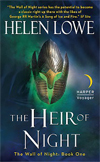
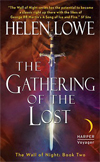
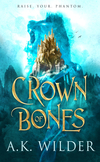
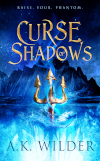
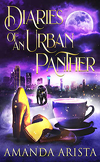
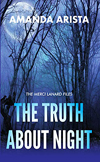

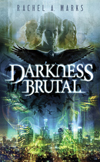
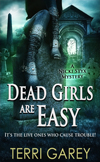
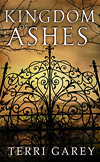
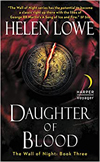
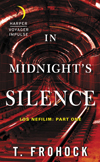

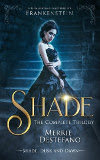

No comments:
Post a Comment